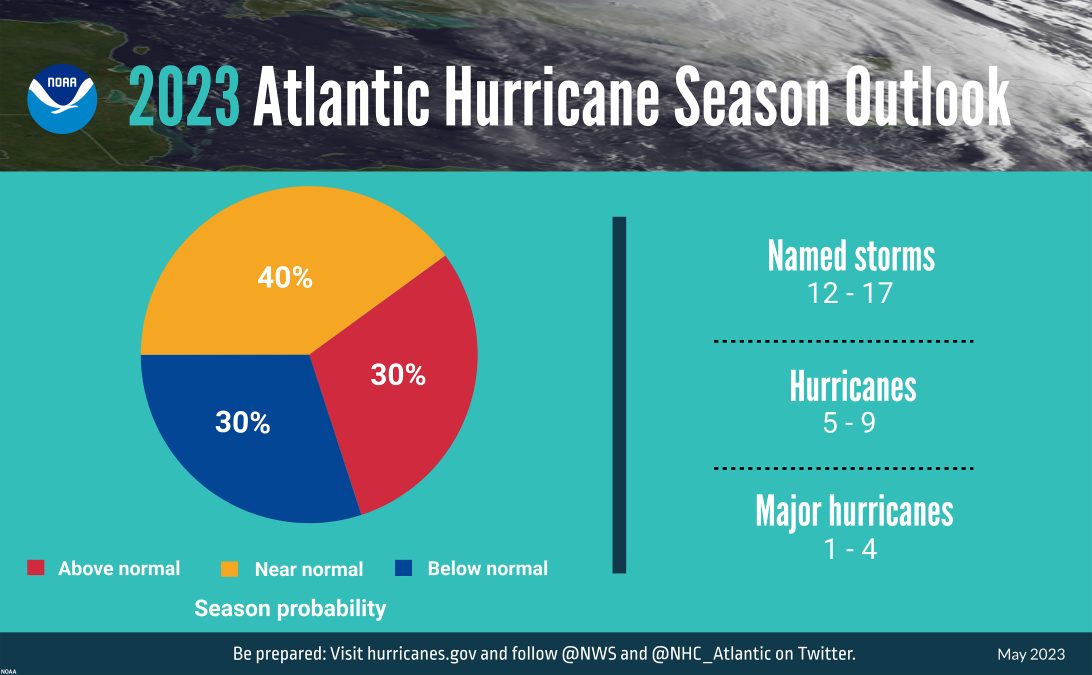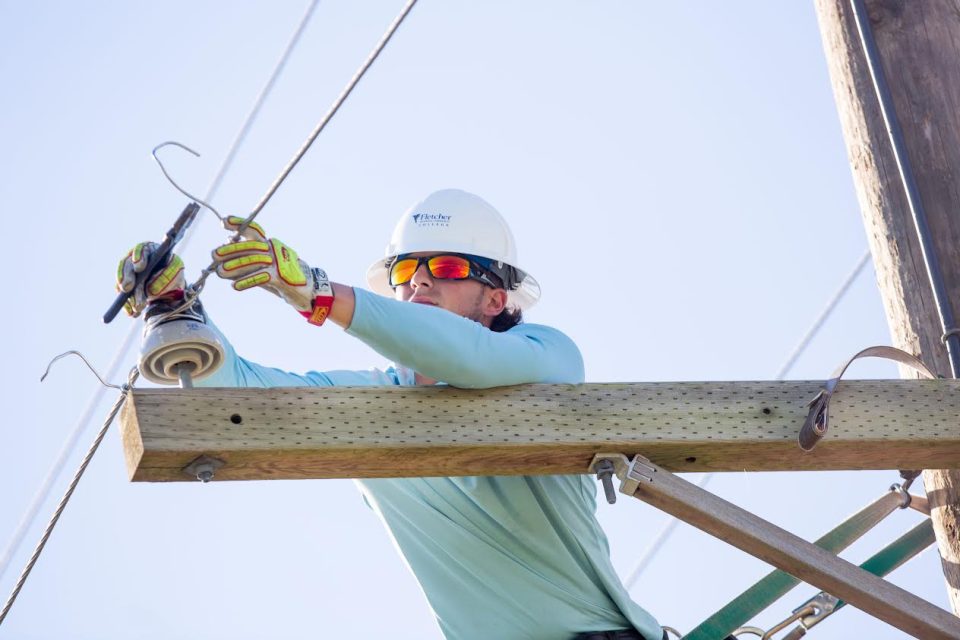
Man Crossing Road on Lawn Mower Struck and Killed in Lafourche Parish Crash
June 10, 2023
Parish President Dove invites all locals to upcoming Coastal Day event
June 10, 2023Hurricane season is once again upon us, and the LSU AgCenter has recommendations to mitigate potential damage and losses to yards, homes and pets as well as tips for keeping food and cleaning supplies on hand.
A fairly average hurricane season thanks to a strong La Niña, 2022 saw 14 named storms — including eight hurricanes, two of which were major.
This year, the National Oceanic and Atmospheric Administration (NOAA) is predicting a “near-normal” season with the potential of 12 to 17 named storms, five to nine hurricanes and one to four major hurricanes. AgCenter specialists have some guidance for staying prepared.
Sandra May, AgCenter nutritionist and registered dietitian, said when preparing for a hurricane, keep foods on hand that do not have to be refrigerated before or after opening, will not spoil over a period of a few days, require little to no preparation and can be prepared without electricity.
“Be sure to have at least a three-day food supply for each person in the household,” she said.
AgCenter food safety expert Jennifer Duhon echoed May’s instructions and added that a three-day water supply is crucial.
“It is best to buy bottled water and prepare for 1 gallon of water per day per person,” she said.
To keep food safe in the event of a power outage, keep the doors of your refrigerator and freezer shut as much as possible.
“Frozen foods can be safely refrozen if they still have ice crystals on them or the temperature is 40 degrees or lower,” Duhon said.
She also said to make sure you have a manual can opener, a food thermometer to monitor temperatures and bleach if you need to sanitize utensils, pots and water.
Cleaning and disinfecting items such as soap, hand sanitizer, disinfecting wipes, or general household cleaning and disinfecting supplies for surfaces are important, especially if a storm necessitates cleanup because of floodwaters or storm damage, Duhon said.
Finally, if you or your family is forced to evacuate to a shelter, she said it’s important to follow that individual shelter’s safety policies.
Another step for storm preparation is to make sure your home is ready.
Carol Friedland, director of the AgCenter LaHouse Home and Landscape Resource Center, said to remember the letter “s” for home projects. She said to inspect shingles, soffits, seals, shutters and surroundings.
Homeowners looking to replace a roof have hurricane-hardy options such as wind-rated shingles (Class H is best) and tear-resistant, synthetic underlayment. But if a replacement isn’t in the plans, Friedland said, homeowners can strengthen existing shingles with roofing cement.
“Put some dabs under the first course of shingles and along gable ends where the roof covering is most vulnerable,” she said. “Roofing cement in the valleys of hipped roofs can also prevent water damage because those areas are prone to leaking with immense amounts of rain. Roof damage is the biggest homeowner insurance loss following hurricanes.”
Friedland also recommended securing soffits with polyurethane sealant and stainless steel screws.
“Well-fastened soffits are less likely to get blown around, allow wind-driven rain into your attic and cause major damage,” she said.
Friedland went on to say that rooftop vents should be checked to assure they are secured to the rooftop and to replace any missing or corroded screws.
“Low-profile vents can be a more aerodynamic replacement for turbine vents, which are prone to blow-off,” she said. “Inexpensive caulk can be used to seal holes where wires, cables and pipes enter or exit your house.”
Finally, Friedland added that when high winds are expected, check your surroundings for anything that could fall, tip over or become flying debris. Elevated air conditioner condensers should be strapped down to keep them from blowing off their platforms in high winds. Any source of debris can damage windows. Shutters such as lightweight translucent removable storm panels are a much more convenient alternative to heavy plywood boards.
“Examine your surroundings for anything that could become flying debris, and store or secure it,” she said.
AgCenter horticulturist Heather Kirk-Ballard said landscapes also can contain hazards during a storm. She recommends inspecting large trees and shrubs for dead branches. A licensed arborist should remove any trees or large branches that may be an issue.
“Be sure that anything that can be picked up by a heavy wind is secured,” she said. “That includes tools, chemicals, trellising and planters.”
Kirk-Ballard added that keeping drainage systems clear of debris is an important task for doing your part to keep stormwater from causing floods. She said to be sure to set any irrigation to rain delay or to turn them off to prevent adding more water to saturated soils, which adds to flooding problems.
Preparation also means getting pets and livestock ready for a storm. AgCenter veterinarian Christine Navarre said animals should have vaccinations and a checkup if necessary.
“Healthy animals will be better prepared to handle the stress of relocation,” Navarre said.
Microchipping pets or having identification for them in some way will help if you are separated from your animals. Navarre recommended storing identification numbers online in the cloud so they can be retrieved from anywhere.
She also said to prepare an emergency to-go box that includes contact information for animals’ veterinarians, medications, feed and leashes. It also is important to get a pet used to its pet carrier and horses used to loading in a trailer before it is necessary for animals to be transported.
More information can be found at the American Veterinary Medical Association website at https://bit.ly/3m0XU3y.
Sandra May can be reached at samay@agcenter.lsu.edu
Jennifer Duhon can be reached at jduhon@agcenter.lsu.edu
Carol Friedland can be reached at cfriedland@agcenter.lsu.edu
Heather Kirk-Ballard can be reached at hkirkballard@agcenter.lsu.edu
Christine Navarre can be reached at cnavarre@agcenter.lsu.edu










